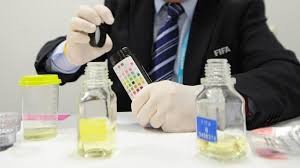By David Owen
December 22 – If there is a doping crisis in football, it is still not being picked up by the authorities.
The 2018 testing figures report was published last week by the World Anti-Doping Agency (WADA). This is a 343-page compendium of data relating to the 340,000-plus samples analysed in WADA-accredited laboratories around the world during the year, equivalent to almost 1,000 samples per day.
This weighty document showed that in the year of the Russia World Cup, not far short of 40,000 football samples were analysed – comfortably more than for any other Summer Olympic sport.
These produced just 125 adverse analytical findings – the jargon for positive tests. That amounts to a proportion of just 0.32%, against an average across all sports of 1.42%. Since some of these findings are likely to be covered by therapeutic use exemptions, giving athletes clearance to use otherwise banned medicines, the proportion of tested footballers who end up ultimately with an anti-doping rule violation against their name may confidently be expected to be even lower.
In total there were 138 instances of banned substances being detected in football-related samples. (An adverse finding may cover more than a single substance).
This broke down into 49 instances of stimulants (including cocaine), 24 cases of glucocorticosteroids, 22 anabolic agents, 20 diuretics/masking agents, 14 beta-2 agonists and nine other cases.
With respect to the Athlete Biological Passport, a means of picking up possible doping by monitoring certain variables over time, a total of 2,527 football samples were analysed in 2018.
FIFA was responsible for just under 1,000 of these, UEFA for 374 and the Portugal Anti-Doping Agency for just over 300.
Contact the writer of this story at moc.l1751318034labto1751318034ofdlr1751318034owedi1751318034sni@n1751318034ewo.d1751318034ivad1751318034

